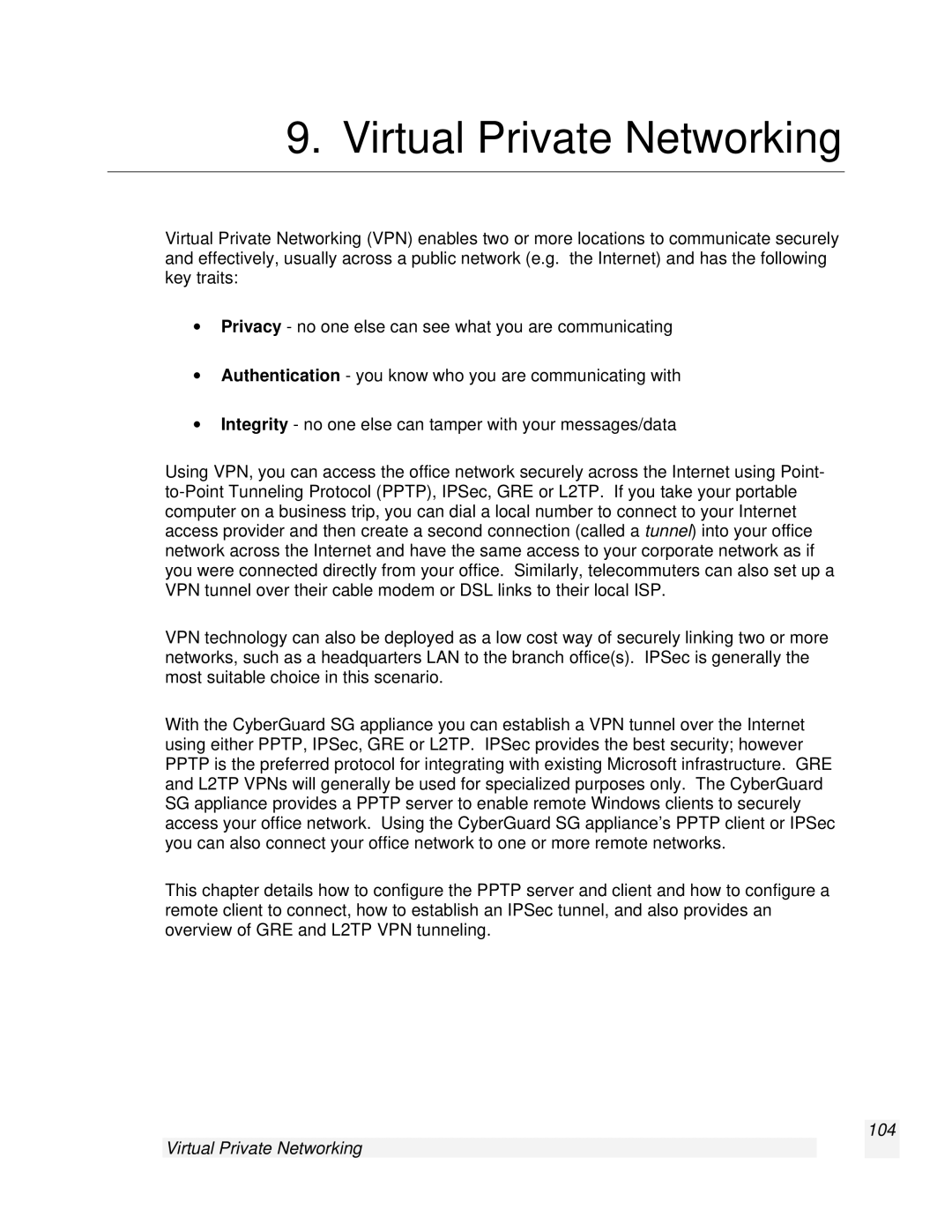
9. Virtual Private Networking
Virtual Private Networking (VPN) enables two or more locations to communicate securely and effectively, usually across a public network (e.g. the Internet) and has the following key traits:
∙Privacy - no one else can see what you are communicating
∙Authentication - you know who you are communicating with
∙Integrity - no one else can tamper with your messages/data
Using VPN, you can access the office network securely across the Internet using Point-
VPN technology can also be deployed as a low cost way of securely linking two or more networks, such as a headquarters LAN to the branch office(s). IPSec is generally the most suitable choice in this scenario.
With the CyberGuard SG appliance you can establish a VPN tunnel over the Internet using either PPTP, IPSec, GRE or L2TP. IPSec provides the best security; however PPTP is the preferred protocol for integrating with existing Microsoft infrastructure. GRE and L2TP VPNs will generally be used for specialized purposes only. The CyberGuard SG appliance provides a PPTP server to enable remote Windows clients to securely access your office network. Using the CyberGuard SG appliance’s PPTP client or IPSec you can also connect your office network to one or more remote networks.
This chapter details how to configure the PPTP server and client and how to configure a remote client to connect, how to establish an IPSec tunnel, and also provides an overview of GRE and L2TP VPN tunneling.
